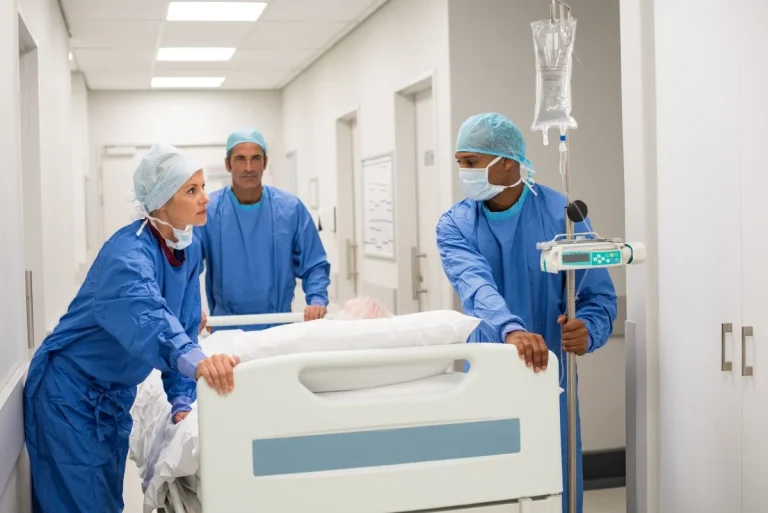When disaster strikes, chaos often seems to take over. But behind every quick rescue or response is a high level of organization. Emergency teams excel under pressure, using structure, communication, and preparation to turn unpredictable events into manageable operations. This post dives into how these teams work, highlighting the roles, strategies, and training that make life-saving efforts possible.
The Backbone of Crisis Response
Emergency teams form the core of disaster relief in both local and global contexts. Whether responding to natural calamities, fires, medical emergencies, or complex urban incidents, these groups bring together specialized professionals dedicated to managing high-stakes situations.
But what defines an emergency team? At its heart, it’s a well-coordinated group with clear roles, precise responsibilities, and a mission to protect life, property, and the environment. Their efforts shield society from the worst outcomes of unpredictable disasters, minimizing harm through rapid, organized action.
If you’ve ever wondered how dozens or even hundreds of people can work together at a disaster scene without tripping over each other, you’re about to find out.
Building the Team Structure
The Roles within Emergency Teams
Effective response rests on assembling a team where each member knows their job. While teams may vary depending on the incident, a few key roles emerge across nearly all emergencies:
- Incident Commander
Always at the top of the hierarchy, the Incident Commander (IC) is responsible for overall strategy, safety, and coordination with other agencies. The IC makes critical decisions under pressure and ensures that everyone’s efforts align with the mission.
- Operations Section Chief
This role directs tactical efforts, deploying resources, managing field teams, and ensuring concrete actions meet the commander’s strategy.
- Safety Officer
Overseeing the team’s well-being, the Safety Officer watches for on-site hazards and keeps everyone alert to emerging risks.
- Medical Team
Paramedics and trauma specialists provide front-line care, triage victims, and coordinate with local hospitals.
- Logistics Team
Without logistics, emergency teams grind to a halt. These experts supply equipment, manage vehicles, arrange shelter, and keep power, water, and communication flowing.
- Public Information Officer (PIO)
The PIO delivers accurate updates to the media and public, working carefully to prevent panic and misinformation.
- Technical Specialists
Engineers, hazardous materials experts, rescue dog handlers, and other specialists are called in as needed for specialized tasks.
Team Size and Adaptability
Team size fluctuates depending on the emergency scale. For instance, a vehicle accident may involve just six responders (two paramedics, three fire and rescue workers, one police officer). A hurricane might require hundreds, spanning multiple agencies and support staff.
Crucially, all roles and structures stay flexible. Teams train for adaptability, scaling operations up or down as new information emerges.
Communication in the Midst of Crisis
Why Communication Matters
Disasters throw up countless barriers to communication, from power failures to noise and confusion. Yet, clear, timely communication is the lifeblood of effective response. Without it, resources are wasted, safety is compromised, and response times suffer.
Building Effective Channels
Teams use well-developed protocols and a mix of technology to stay connected:
- Radio Systems and Secure Channels
Most responders rely on secure multi-channel radios to communicate. For rural, mountainous, or post-disaster areas where infrastructure is compromised, advanced tools like satellite walkie talkies guarantee a link to command centers.
- Incident Command System (ICS) Protocols
Teams use standard words, phrases, and reporting formats. This reduces confusion and ensures everyone understands priorities, no matter the team’s background.
- Briefings and Debriefings
At the start and end of every shift, teams regroup, sharing information, clarifying tasks, and updating their strategies based on the latest intelligence.
Maintaining Calm under Pressure
Perhaps the most impressive communication skill is how responders keep messages concise and calm, even as all hell breaks loose around them. There is no room for panic or unclear speech. Every word matters when lives are at stake.
Training for the Unknown
Simulated Emergencies
Responders don’t just read about disasters; they repeatedly practice with large-scale training events designed to simulate real emergencies. These drills can span several days and might include:
- Mock accidents with volunteer “victims”
- Hazardous material leaks
- Fires and simulated rescues
- Multi-agency disaster scenarios
These exercises allow responders to test their readiness, understand each role, and reveal weaknesses in plans or skills.
Cross-Training Enhances Flexibility
Because no two incidents are identical, cross-training is vital. Medics learn basic rescue; firefighters train in mass-casualty triage. This ensures teams stay flexible and can fill multiple roles when resources are stretched.
Ongoing Learning and Certification
Most agencies require continuing education. Staff train in new technologies, changing protocols, and evolving threats—from chemical spills to cyber incidents. Certifications are continually updated, ensuring that everyone is prepared for challenges old and new.
Unseen Obstacles and the Value of Coordination
Several factors can complicate emergency response, even for the best-trained teams:
- Extreme weather makes movement difficult.
- Damaged infrastructure blocks routes and communications.
- Crowds or panicked bystanders create hazards.
- Complex incidents involve multiple agencies—even international teams.
Coordination remains the secret weapon. Agencies use joint operating manuals, memoranda of understanding, and interoperable technology to ensure smooth cooperation, even across jurisdictional boundaries.
Taking Lessons from the Front Lines
Emergency responders constantly evaluate each incident in debriefings after the fact. What went well? What failed? How could communication, decision-making, or resource allocation improve?
This feedback loop feeds straight into training and helps teams grow stronger, safer, and faster with every response.
Conclusion
Next time you see news of firefighters bringing a wildfire under control, paramedics saving lives after a pile-up, or relief agencies restoring order after a hurricane, know that none of it happens by chance. It’s the product of relentless drills, split-second communication, flawless role execution, and hard-earned trust.

